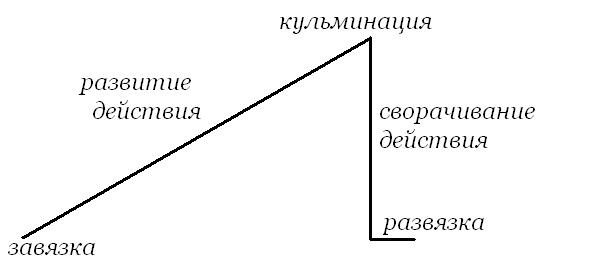This word came to Russian from the French “reportage” and the English “report”, which in translation means “to report or transmit.” But in the report it’s not enough just to tell the news, it’s important to create the effect of presence, to engage the reader in the event, to make them empathize, to feel the situation and encourage them to act.
At the same time, the format of the story fades into the background and has more of an auxiliary function. The plot always dominates. We read to the end those stories that capture us, and not those made with the greatest number of technological tricks.
Reporting can be either a separate genre of journalism or appear in convergence with other genres. Reporting elements can occur in news reports, in interviews, and in analytics. It helps to revitalize the text and show the atmosphere.
It often happens that large articles can begin with a description of a small scene characterizing the problem. Thus, on the example of one case, the social importance of the whole problem is shown. This technique is called a “delayed strike.”
For example, an article on the late delivery of humanitarian aid may begin with a brief description of the daily struggle for survival in a refugee camp. Thus, by making the story closer to the reader, you will transform dry or bureaucratic material into a vivid reportage that attracts the personal, human interest of the reader.
The first step in the preparation of any material should be the study of the sources of information and the preparation of a plan in accordance with this.
Break down the overall design of the report into simpler components and compile a table of the most important and optimal sources, as well as documents, eyewitnesses, or other opinions that you may need to complete the writing process.
When working with sources, one should be guided by common sense and the basic principles of journalism, but often these basic rules are ignored – due to lack of time, lack of opportunities or pressure from outside.
Story in space and time
A good reporting creates a triple effect: presence, authenticity and empathy.
To do this, you need:
- To visit the venue and see for yourself. A reporting cannot be written remotely or from other people’s stories.
- To look at the picture as a whole, notice as much as possible, including details and nuances. They sometimes can tell more than pages of narratives. But they can also lead away from the plot, so do not overdo it.
- To hear all possible opinions, talk with participants in the event. It is people who are the agents of history and create an emotional connection with the reader.
- To collect facts, including restoring the backstory of the incident, which will help you tell a story.
- Record everything and take pictures. The format, as we recall, plays a supporting role, and photographs or videos from the scene will help convey the atmosphere, immerse the reader in context, and if they reflect emotions, they will appreciate it.
At the same time, interest in the reporting directly depends on the inaccessibility of the place the author has visited. This may be the north pole or a remote mountain village, that is, a place that is geographically far from the reader. The task of the journalist is to make him closer, through his experiences.
Or it can be a monastery or a psychiatric hospital, that is, a place with limited access. And in this case, the journalist becomes a bridge to events that occur far from the eyes of ordinary readers.
The storytelling in the reporting can develop in two planes: in time and in space.
The first option is used to describe events. For example, reporting from a rally can begin with a gathering of participants and end with how they disperse.
A story that develops in space describes the movement of a journalist when collecting information. For example, a report from a remote village may begin from the road to it, then move to the house of one of the residents, then to the local administration, and end in the village library.
However, the beginning and end of the reporting does not have to coincide with the beginning and end of the event or the movements of the journalist. And most often this is what happens. Reporting from the rally can begin with a speaker in the middle of the event and also end with a speech by one of the speakers.
A story from a remote village can begin with the story of one of the inhabitants, and end with the road to the village.
If you are writing material from a certain locality, try to “transfer” the reader there, providing some noteworthy details from yourself, as from an eyewitness. Make the reader believe that you, the journalist, are at the scene.
If you are writing about a conflict, then make every effort to talk with both parties and find an outside source for an independent assessment.
In addition to what you see, it is also worth fixing sounds, smells and sensations – this will add volume to the story and make it “lively”.
Nevertheless, a report is not just a chronicle of everything that you saw, heard and felt. Emotionally vivid episodes are important and those that reveal the conflict – everything else is superfluous.
Voice of the author

Roy Peter Clark. Photo taken from personal page on Facebook
In this genre of journalism, there is always a “voice of the author”. A good reporting is always individual, and when you read it, a visual series appears in the head. Roy Peter Clark, an American writer, editor, and author of 50 Writing Techniques, even coined the term cinematic writing. It means that the text is born in the mind of the reader – frame-by-frame.
The share of author’s subjectivity that is present in the report makes it closer to literature or fiction than to news articles. And, like any literary work, the report must be written according to the laws of drama:
- Starting point – the beginning of a conflict or problem
- The development of action – the characters are trying to solve it. That is, we observe the story itself, experience it together with the hero.
- The culminating point is the moment when the heroes are approaching the decision
- Outcome – they either succeed or not. In this case, the outcome should be logically connected with the starting point. Since it is between them that the whole narrative is located.

Illustration: prosims.ru
In the report, as in any story, the center of the whole story should be a simple person with his own problems and the desire to solve them. Thus, the reader associates the hero with himself/herself, which helps to create an emotional connection and to be imbued with his story, which means to read till the end.
Balance of opinions
Remember that the basic principles of international journalism are impartiality, honesty and objectivity. To comply with them, you must carefully approach the selection of the sources of information.
If the article refers to a dispute between two or more parties, and only one party is presented in it, then indicate the sources for the facts, not opinions. And make sure that it is clearly visible that the material was received from only one side.
The origin of points of view must always be open. Do everything to avoid anonymous sources. If someone wants to say something unpleasant for others, then he should be ready to answer for his words and put his name under them.
Reporting should not support any of the parties to the dispute, and care should be taken to present opinions as points of view, and not as facts. If you are writing a critical article, you must provide the other party with a legitimate opportunity to respond.
Reporting should not provide support for one political party, religion, people or ethnic group to the detriment of another. It allows you to provide fair information about the policies and statements of the parties and include comments that one party or group can make regarding another.
But you need to remember the main principle – journalists should not express their own opinion directly, give their comments or express personal political preferences. Balanced journalism provides a clear distinction between facts and opinions.
When you have collected and written a report, you should think about its design. And here it must be considered that there are two types of reading: the first is linear, when the text is read in order from beginning to end.
And the second one is cross-reading, that is, the reader only follows the headings, the insets and everything that catches the eye. Unfortunately, today in a huge stream of information, most people read long texts that way. Therefore, when designing the material, it is important to consider the reading of the second type and make sure that the structure of the material is easily read even by a fleet glance.
Exercises:
- View newspaper or online publications. Try to figure out what makes you read various articles.
Why does one article “capture” you so much that you read the entire text to the end, and another encourages you to turn the page and look for other articles?
When the justified amount of detail makes the article interesting, and when the details become annoying?
- Discuss with colleagues the following example and possible ways to build an article:
You are a reporter working in Sudan, where protests are taking place because humanitarian aid does not reach the starving population. The situation in the relief camps is appalling. And you just returned from one of the camps with your own assessment of the crisis.
After you return to the capital, while you are considering how to write an article, a Red Cross official calls you and offers a signal copy of a previously unpublished report on this situation. The report contains harsh criticism of the humanitarian aid distribution process and suggestions for rectifying the situation. Now you have your own information about living conditions in the camps, and an excellent report.
How will you build your article?
What should be the relationship between the description of real conditions and the “news facts” of the report?
One version of your article will be for the people of Africa, the other for the audience of Central Asia. What should be the difference in the amount of detail for these two options?
Additional literature:
Reporting for Change: An IWPR Handbook for Local Journalists in Crisis Areas (in English).
If you have found a spelling error, please, notify us by selecting that text and pressing Ctrl+Enter.






